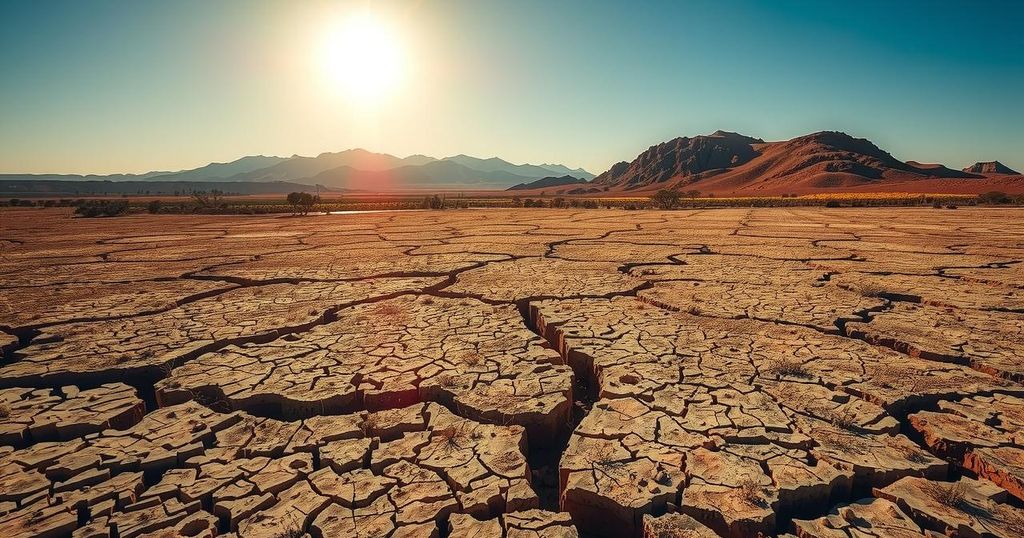Climate change
ALANA INSTITUTE, BARROS, BELÉM, BRAZIL, CARATATEUA ISLAND, CLIMATE, CLIMATE CHANGE, ENVIRONMENT, GLOBAL WARMING, GREENHOUSE GAS EMISSIONS, HELD, INPE, JOÃO VICTOR DA COSTA DA SILVA, MARIA ISABEL BARROS, NATIONAL DISASTER MONITORING CENTER, PROFESSOR HELDER FIALHO DIAS SCHOOL, SAO JOAO DO OUTERO, SOUTH AMERICA
Jamal Walker
0 Comments
Extreme Heat Threatens Educational Outcomes in Brazil’s Schools
Belém, Brazil, faced extreme heat for over half of 2024, significantly impacting student concentration and learning. A report indicated that many schools are in areas with higher than average temperatures, highlighting educational disparities, especially among marginalized communities. The World Bank found learning loss correlates with extreme heat, necessitating urgent infrastructure improvements and nature-based solutions to ensure conducive learning environments for students.
In 2024, Belém, Brazil, faced extreme heat for over half the year, with 212 of its 366 days surpassing typical temperature averages, making it the second hottest city in Brazil after Melgaço. Affected students like João Victor da Costa da Silva, age 15, reported that the intense heat made it difficult to concentrate, leading to an uncomfortable learning environment. The rising temperatures, during which the average was 5°C above normal, forced even some teachers to take breaks from lessons, significantly impacting academic performance.
Research from the National Disaster Monitoring Center points to widespread temperature increases in Brazil’s schools, especially in the Amazon region. According to the Alana Institute, around 64% of schools in major cities exist in areas with temperatures at least 1°C above average, with many being in heat islands. In certain regions, nearly 36% of predominantly Black student bodies are located in these hotter zones, emphasizing issues of environmental racism and inequality.
The alarming findings illustrate the adverse effects of extreme heat on education, with approximately 370,000 students in high-risk areas vulnerable to significant learning loss. Students in poorer regions face compounded difficulties due to inadequate school facilities, with around 90% of affected schools situated near slums. This socio-environmental challenge links high temperature exposure to educational disparity, threatening children’s futures.
Economic analyses reveal that extreme heat diminishes learning significantly, as evidenced by data showing a constant decline in test scores correlating with rising temperatures during vital educational years. Notably, in Brazil, an increase of 1°C above the norm entails a loss of 10% of the educational year’s average learning outcomes. Furthermore, learning declines more notably in areas lacking basic amenities such as air conditioning.
Methods to combat this issue include enhancing school infrastructure through air conditioning installations. For instance, Piauí is addressing its average temperature rise through a commitment to equip schools with climate-appropriate facilities by 2026. However, municipal schools often lack the necessary funding for such improvements, prompting experts to advocate for nature-based solutions.
In Brazil, initiatives like planting mini-forests around schools have proven effective in reducing ground temperatures. The NGO Formigas de Embaúba is actively working on this project, demonstrating marked temperature differences between traditional school courtyards and forested areas. Leaders in environmental education contend that creating natural spaces is essential in tackling the effects of climate change on student learning environments.
Moreover, the ongoing heat crisis in Brazil extends beyond the classroom, affecting logistics and access to education in remote areas where students may not attend school altogether. Experts emphasize building climate-resilient infrastructure is crucial to sustaining student attendance and performance outcomes. With half of the poorest municipalities experiencing such challenges, the impact upon students’ futures is profound.
UNICEF stresses the urgency of addressing climate change’s effects on education, with a forecast that 250 million children globally could be affected by 2024. This alarming statistic highlights that vulnerable youth are disproportionately at risk amid escalating climate crises. As educational and humanitarian concerns intertwine, urgent measures are necessary to confront these escalating challenges.
The rising temperatures in Brazil, particularly in cities like Belém, threaten educational access and outcomes for students. Research indicates that extreme heat adversely affects concentration and academic performance, exacerbating existing inequalities in educational systems. Comprehensive strategies, including improved school facilities and nature-based solutions, are necessary to mitigate these impacts and promote sustainable learning environments. The intersection of climate change and education demands urgent attention and action to support the youth’s future. Experts recommend immediate measures to ensure adequate learning environments for all students, particularly those in disadvantaged regions, to combat the growing crisis.
Original Source: valorinternational.globo.com




Post Comment